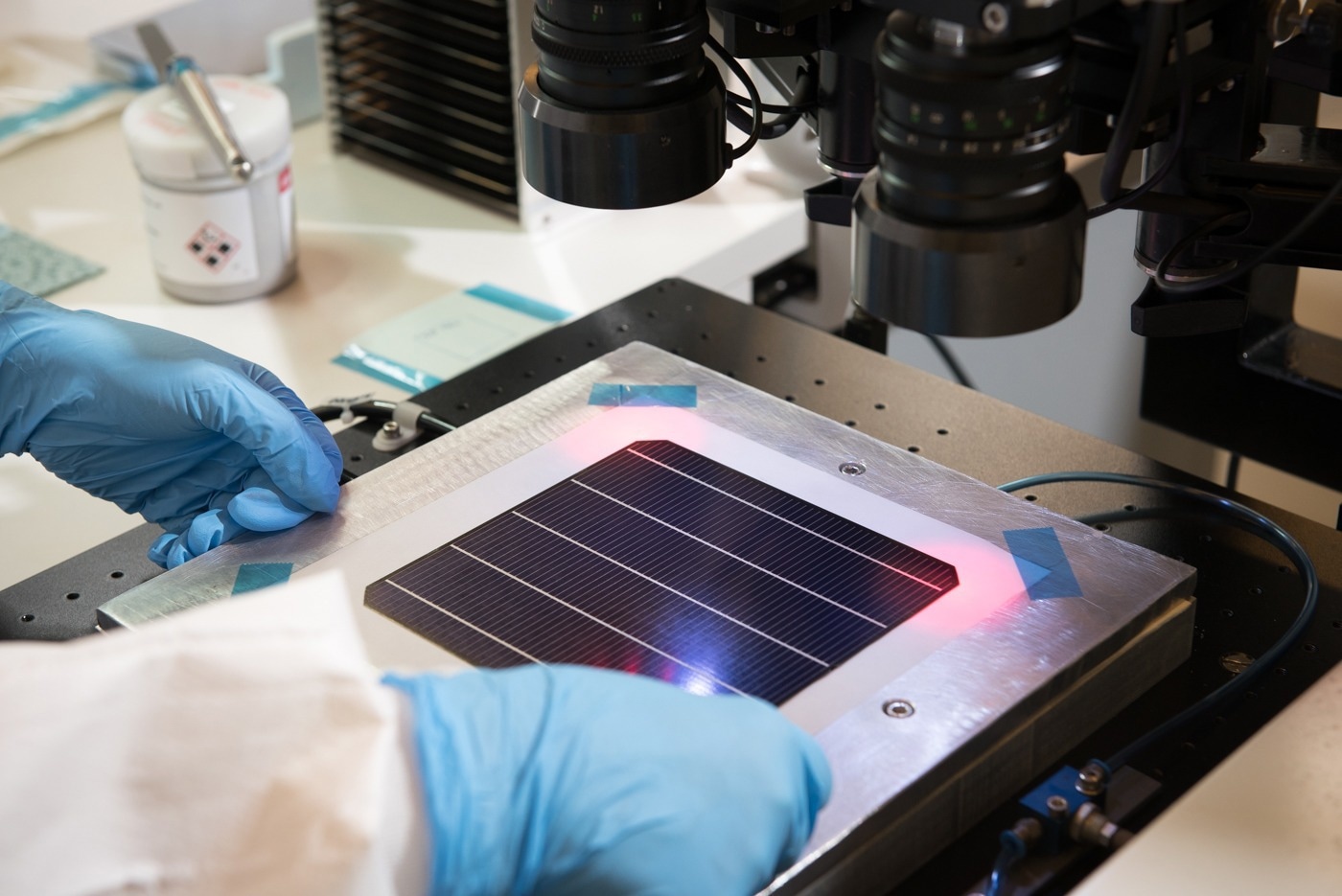Solar photovoltaic technology is an eco-friendly approach to generating electricity. Perovskite-on-silicon tandem solar modules, supplied by Oxford PV, have been examined for the first time in a study of their lifecycle environmental effects.
 Oxford PV provided the perovskite-on-silicon module and process data for the study from its volume manufacturing line in Germany. Image Credit: Oxford PV
Oxford PV provided the perovskite-on-silicon module and process data for the study from its volume manufacturing line in Germany. Image Credit: Oxford PV
Throughout their lifespan, these cutting-edge tandem solar modules are even more ecologically benign than traditional silicon heterojunction modules. The peer-reviewed publication Sustainable Energy & Fuels has now published the study.
Decarbonization of households, companies, and industries necessitates using solar photovoltaics (PV). It is becoming more widely used as a dependable, affordable, and ecological energy-generating alternative.
As countries work to achieve their climate targets and energy security requirements, the number of installed solar PV capacity worldwide has increased significantly over the past decade, rising from 2 GW in 2002 to more than 1 TW (1000 GW) in 2022.
Perovskite-on-silicon solar cell technology produces more electricity than conventional silicon technology and has the potential to significantly speed up the global deployment of solar power.
The method uses a tandem approach, which deposits a perovskite cell on top of a silicon cell to maximize the power produced by the combined cells. Solar conversion efficiency has already surpassed 31% because of this tandem technology, shattering previous records.
The development of more environmentally friendly solar energy systems must acknowledge the environmental effects of solar PV modules throughout their whole existence.
Perovskite-on-silicon PV module lifecycle assessments, however, have up to this point mainly depended on data from testing and laboratory facilities rather than from manufacturers.
The environmental performance of perovskite-on-silicon PV modules made in factories has now been evaluated for the first time in a report that was published in Sustainable Energy & Fuels.
We have found that perovskite-on-silicon PV modules are more environmentally advantageous than conventional silicon heterojunction modules over a 25-year lifetime.
Bernd Stannowski, Study Co-Author, Helmholtz-Zentrum Berlin
A perovskite-on-silicon module’s lifecycle was thoroughly evaluated by the researchers in terms of its ability to cause global warming, water use, toxicity to people and animals, and metal usage.
They evaluated the materials and energy input for a module’s “cradle to gate” lifecycle, taking into account all inputs for the fabrication of wafers, the creation of perovskite cells, and the production of modules.
The researchers then compared the tandem module’s environmental effect to the amount of power it would produce over the course of its lifetime.
We found that the perovskite-on-silicon module has 6% to 18% less environmental impact than a silicon module, when we consider the additional energy generated over the tandem module’s 25-year lifetime.
Martin Roffeis, Study Co-Author, The Technical University of Berlin
The tandem module used in the study would provide the same amount of electricity in 22 years as opposed to the 25 years of the reference silicon heterojunction module.
The higher power conversion efficiency of the perovskite-on-silicon tandem module compensates for its environmental impact due to the additional perovskite material and processes.
Jan-Christoph Goldschmidt, Study Co-Author, The Philipps University of Marburg
The research also shows that energy used in silicon wafer fabrication significantly impacts the environmental performance of a perovskite-on-silicon module.
From its volume manufacturing line in Germany, Oxford PV provided the study with perovskite-on-silicon module and process data.
The sustainability of solar materials and supply chains is growing in importance as the world deploys solar at the multi-terawatt level. We hope our contribution will help industry and the wider scientific community to improve the design, production, and end-of-life management of tandem technologies, supporting their rollout.
Laura Miranda Pérez, Head, Materials Research, Oxford PV
Journal Reference:
Roffeis, M., et al. (2022) New insights into the environmental performance of perovskite-on-silicon tandem solar cells—a life cycle assessment of industrially manufactured modules. Sustainable Energy & Fuels. doi:10.1039/D2SE00096B.